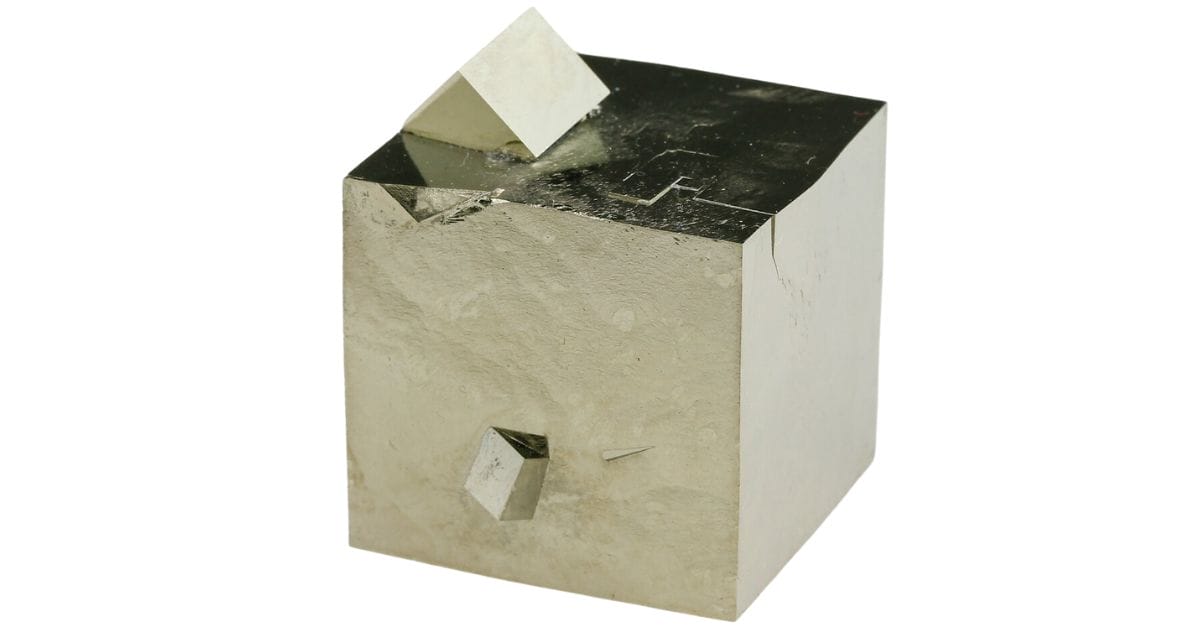Pyrite is often called “fool’s gold” because of its shiny, metallic look. But there’s much more to this mineral than meets the eye, with several fascinating types of pyrite waiting to be explored.
In the world of geology, pyrite stands out for its variety, including forms like octahedral pyrite, Navajún pyrite, and pyrite suns. Each type has its own story and place in the earth’s crust, showing the incredible diversity of nature.
The 9 Different Types Of Pyrite And What They Look Like
Get ready to learn about these intriguing forms of pyrite and where they can be found around the globe.
Cubic Pyrite
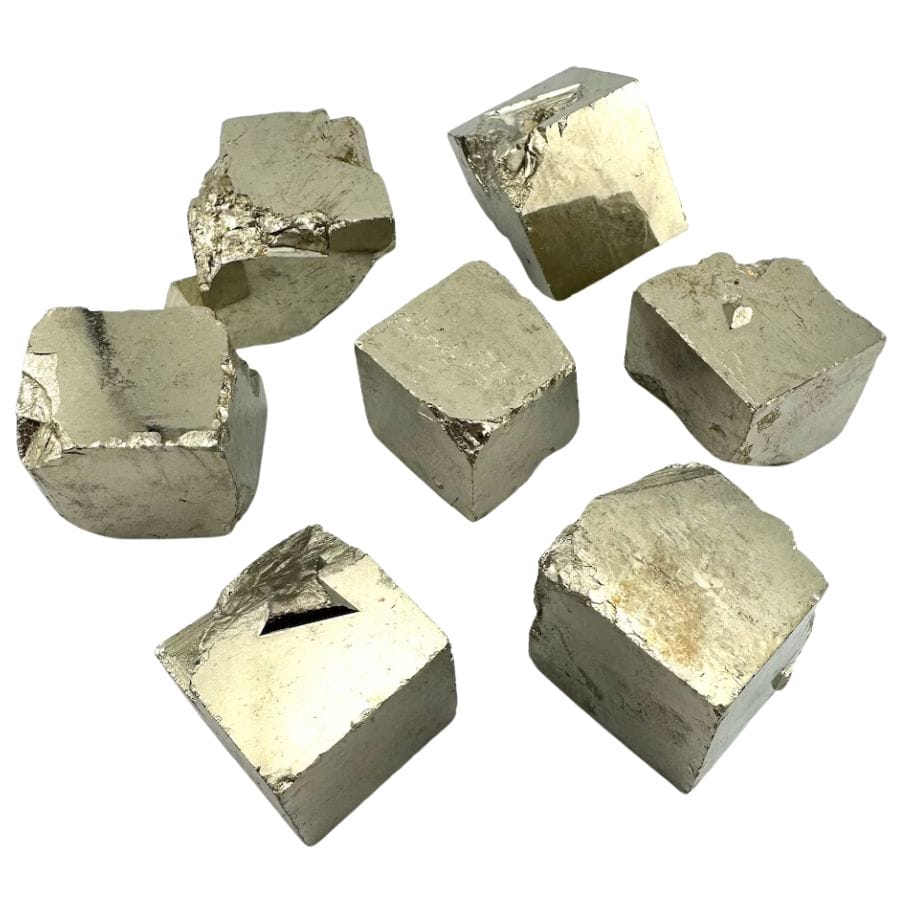
Cubic pyrite crystals are notable for their perfect or nearly perfect cubic shape, featuring six square faces that meet at right angles. This shape happens because of the way the pyrite’s atoms arrange themselves as the mineral grows.
These crystals form through a fascinating natural process known as cubic crystal growth. This process begins when a liquid solution becomes oversaturated with dissolved iron and sulfur ions.
The specific arrangement of iron and sulfur atoms within these crystals encourages the growth of cubes, minimizing the overall energy of the crystal structure.
These cubes grow layer by layer, with new ions attaching to their surfaces, until no more ions are available or something else stops their growth. This meticulous process results in crystals with six square faces that meet at right angles.
Where you can find cubic pyrite
Pyrite can be found in many places around the world, often in sedimentary rocks like shale and coal beds. It also appears in metamorphic rocks and as a mineral in veins within other rocks.
For those interested in finding pyrite themselves, checking out where to go rockhounding can be exciting. Our rockhounding guide provides tips and locations for those looking to discover pyrite and other minerals in nature.
Cathedral Pyrite
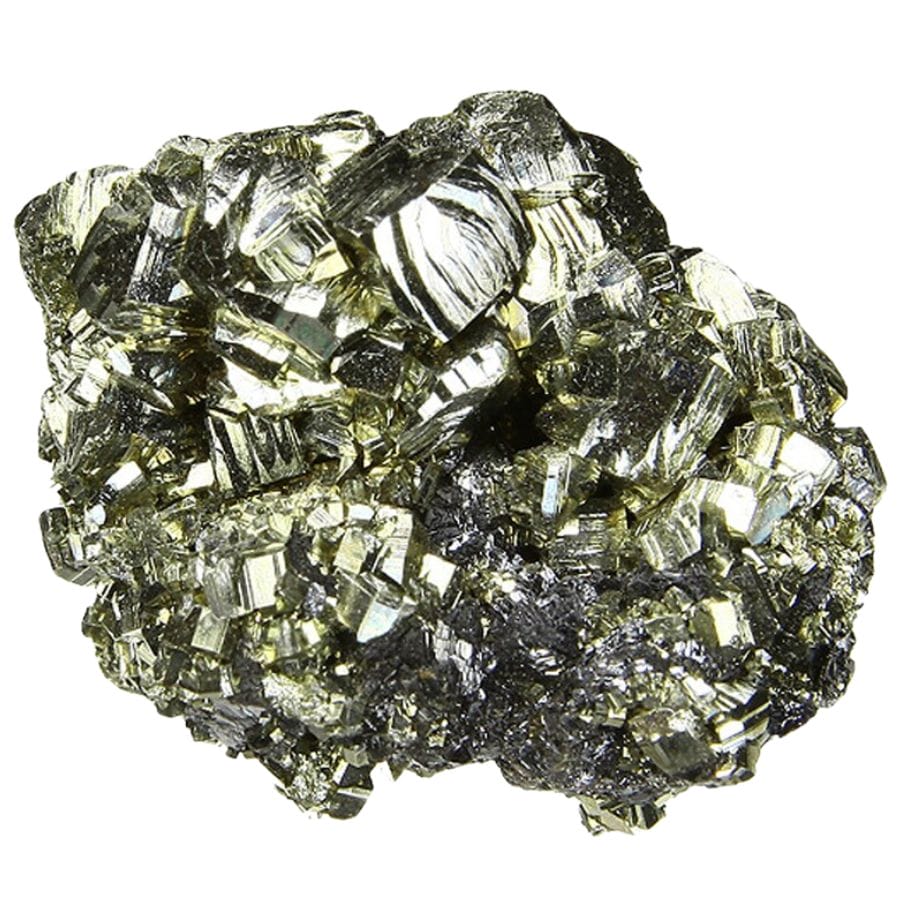
Cathedral pyrite is a fascinating mineral formation that doesn’t grow like the usual cubic pyrite. It forms when numerous individual pyrite crystals come together in a unique pattern.
This type of pyrite typically grows in confined spaces within rocks or sediments, which shapes its distinctive appearance.
As these individual crystals grow in restricted conditions, they become interwoven. This leads to the creation of a cluster that resembles the intricate architecture of Gothic cathedrals, complete with steps and terraces.
The overall shape of cathedral pyrite is quite different from its cubic relatives, forming not as single cubes but as complex clusters with a rugged, architectural look.
Despite their different appearances, both cathedral and cubic pyrite share the same basic properties, including their hardness and brittleness.
Where you can find cathedral pyrite
Cathedral pyrite might be found in the Appalachian Mountains and the Mississippi Valley, though finding specific spots is challenging because of how rare these formations are.
Countries like Spain, Germany, and France have also reported cathedral pyrite occurrences.
Pyrite Sun
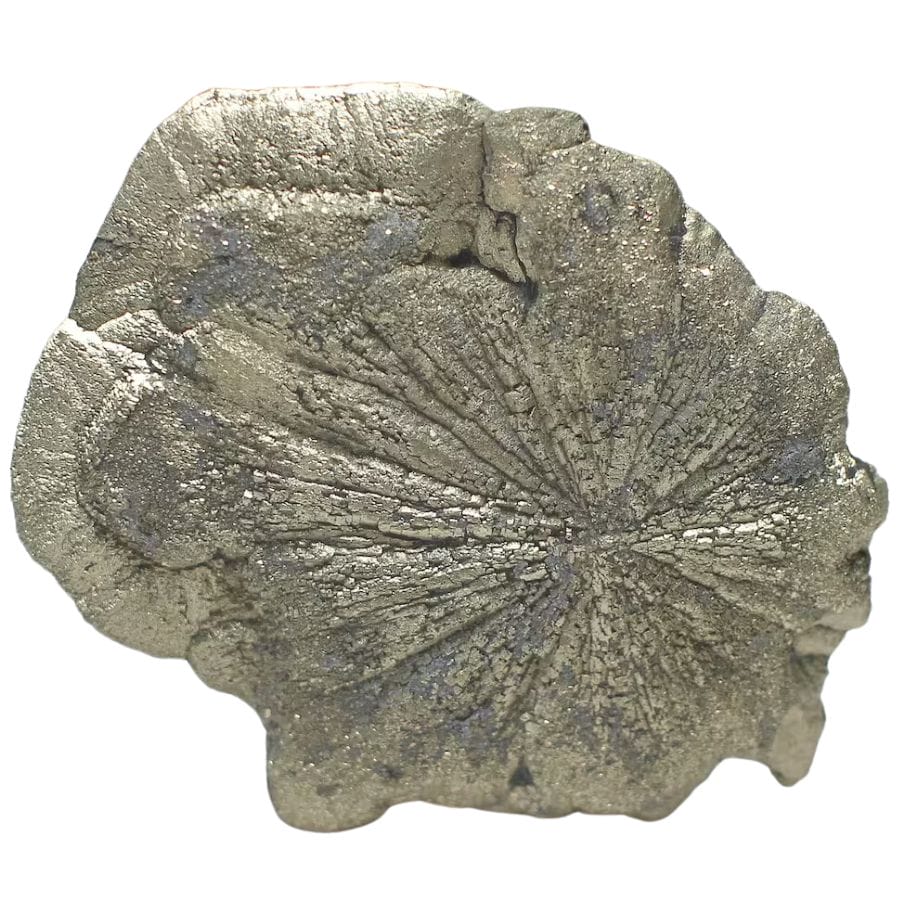
Pyrite suns, also known as pyrite dollars or miners’ dollars, are an intriguing form of pyrite that stands out among the different types of pyrite due to their unique shape and structure.
Unlike the usual cubic form of pyrite, pyrite suns have a flat, disc-like shape with patterns that spread outward, resembling the sun’s rays.
These formations are thought to have originated from pressure-induced crystallization within sedimentary environments, such as within shale or coal seams.
The immense pressure from the earth compacted these sediments, affecting the pyrite crystals inside to flatten and spread laterally, creating the radiating striation effect.
Pyrite suns are not only distinctive in shape but also in size, varying from as small as a coin to as large as a dinner plate.
Where you can find pyrite suns
Pyrite suns can be found in the Shawnee Hills region of southern Illinois, especially around Sparta and Randolph County, within coal mines deep below the surface.
Pyritohedral Pyrite
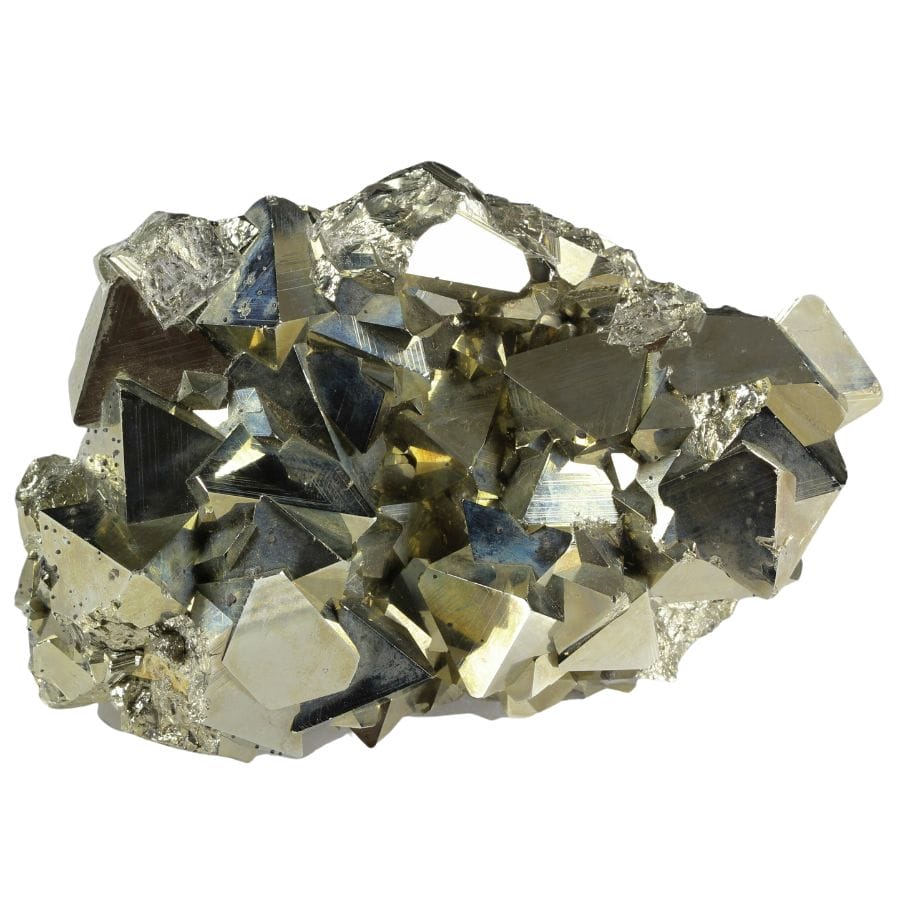
Pyritohedral pyrite, also known as pentagonal dodecahedron pyrite, stands out from other forms of pyrite with its unique 12-sided shape.
Each side is a pentagon, which gives the crystal a distinctive appearance.
The formation of pyritohedral pyrite is influenced by the chemical composition of the environment, particularly a higher sulfur content, which can encourage the growth of this form over others.
While the value of minerals can vary, understanding how much pyrite is worth depends on factors beyond just its form.
Pyritohedral pyrite, with its unique shape, is a subject of interest not just for its appearance but for the insights it offers into mineral formation and growth conditions.
Where you can find pyritohedral pyrite
Pyritohedral pyrite can be found in various places, but well-formed crystals have been found in places like the Andes Mountains in Peru, Bolivia, Spain, and the French Alps.
In the United States, finding pyritohedral pyrite is possible but rare, with some reports pointing to areas in the Appalachian Mountains and the Mississippi Valley.
Rainbow Pyrite
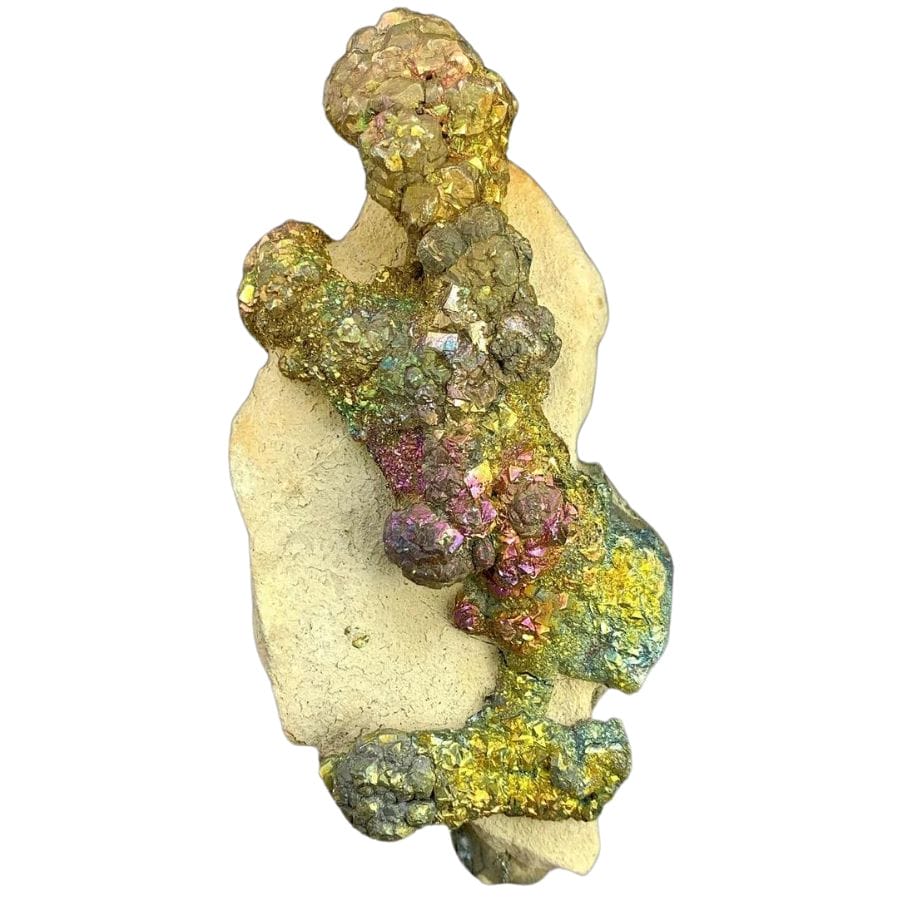
Rainbow pyrite is a special type of pyrite known for its dazzling display of iridescent colors. This iridescence doesn’t come from the pyrite itself but from a layer of minerals on its surface.
The colors of rainbow pyrite can shine in hues of gold, green, pink, and blue, depending on how light interacts with the thin layers on its surface.
When light hits these layers, it bends and separates into various colors, much like a rainbow.
It’s crucial to know that not all rainbow pyrite is natural; some are artificially treated to mimic this colorful appearance. The natural version is prized for its unique, iridescent qualities that occur without any human intervention.
Where you can find rainbow pyrite
Rainbow pyrite is most famously found in Russia, particularly in the Volga River region where it forms in clay deposits.
Navajún Pyrite
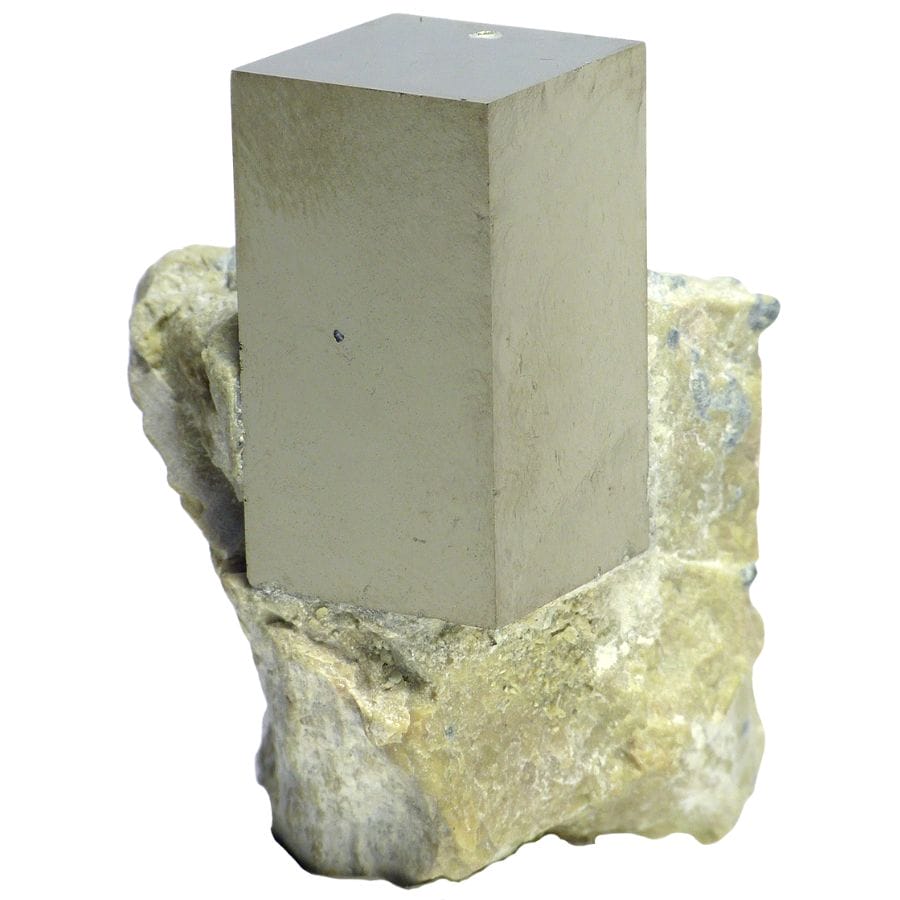
Navajún pyrite is known for its large, perfectly cubic crystals, which stand out due to their clear edges and smooth faces. These crystals are a natural marvel, showcasing what pyrite looks like when formed under ideal conditions.
The process leading to the formation of Navajún pyrite involves a perfect mixture of minerals, along with low-grade hydrothermal metamorphism.
This unique geological setup allows iron and sulfur to crystallize into pyrite, forming the impressive cubes seen today.
These pyrite cubes can grow quite large, some reaching more than 15 centimeters on each side. Their size and the precision of their cubic shape make them fascinating to those interested in the natural world.
Where you can find Navajún pyrite
Navajún pyrite is named after the area it is found in, which is Navajún, located in the La Rioja region of Spain.
Octahedral Pyrite
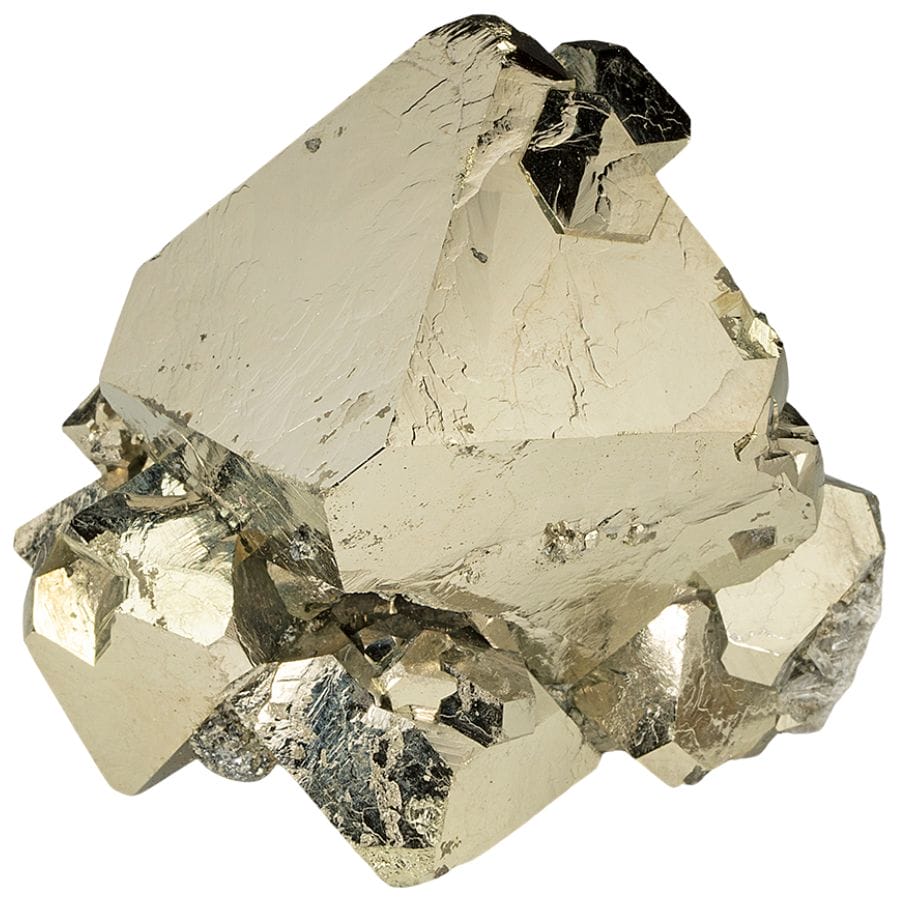
Octahedral pyrite grows quickly due to the lower concentration of ions, which leads to its distinctive eight-sided shape.
Each side of octahedral pyrite looks like a triangle, creating a structure that resembles two pyramids placed base-to-base.
It’s important to know the difference between octahedral pyrite and pyritohedral pyrite. While octahedral pyrite has eight sides, pyritohedral pyrite has twelve sides with pentagonal faces, forming a completely different shape.
Where you can find octahedral pyrite
Octahedral pyrite is rarer than its cubic counterpart, with occasional finds reported in the western states such as Colorado, Utah, and Nevada.
Around the world, the chances of finding octahedral pyrite increase, especially in the Andes Mountains of Peru and Bolivia. Countries like Spain, France, and Germany, have more frequent occurrences of octahedral pyrite.
For those interested in exploring further, you can check out our crystal mining guide for insights on where to find crystals and other unique mineral formations.
Striated Pyrite
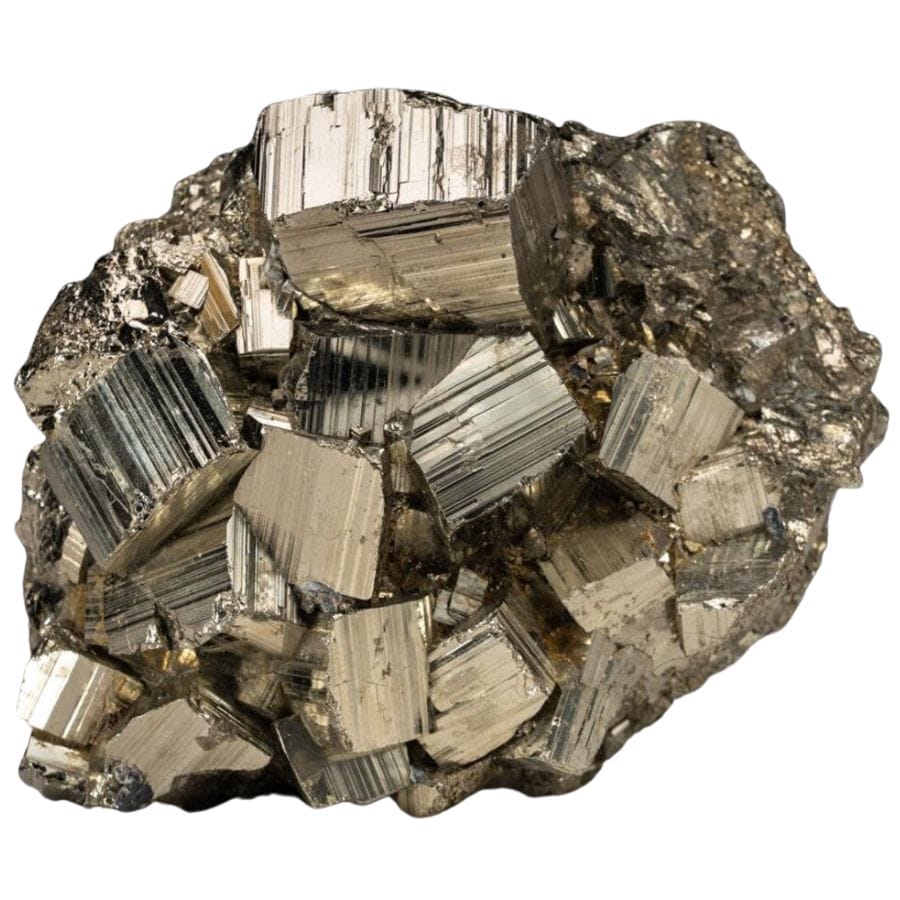
Striated pyrite crystals have parallel grooves or lines on their surface. These striations are not unique to a specific form of pyrite but can appear on various pyrite types.
The grooves or striations can develop through different processes, such as during the crystal’s growth. For example, as cubic pyrite forms, imperfections on its surface can lead to striations that run parallel to the edges of the cube.
When two pyrite crystals grow closely together in a twinned formation, the area where they meet might show striations. This happens because the crystal structures are slightly misaligned at the interface, creating these linear marks.
Striations on pyrite can also result from external forces, such as grinding or polishing the crystal.
So, striations are actually a feature that can occur on any pyrite crystal, depending on how it was formed or treated.
Where you can find striated pyrite
Striated pyrite, characterized by its parallel grooves, can appear on specimens from any location where pyrite is found, including across the United States from the Appalachian Mountains to the Western states.
Pyrite Druzy
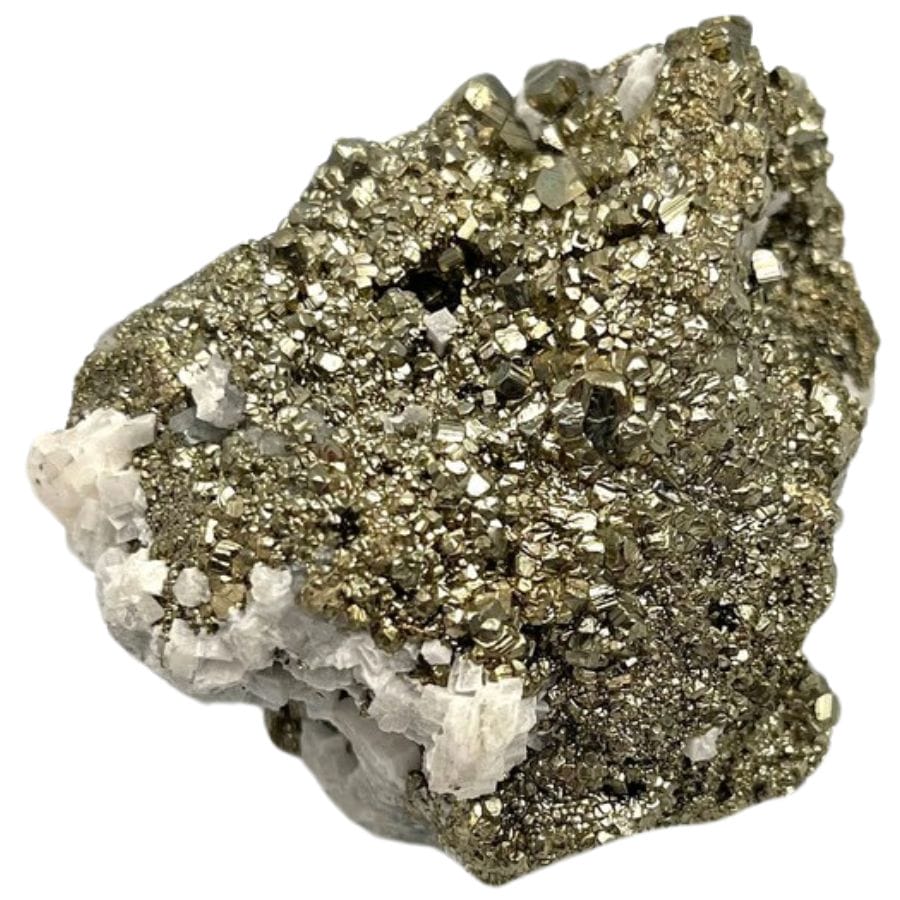
Pyrite druzy, also known as drusy pyrite or pyrite druses, is a type of pyrite characterized by a specific growth habit.
The term “druzy” refers to tiny crystals that have formed close together on a surface, creating a sparkling effect.
This kind of pyrite forms through a process where hot, water-rich fluids dissolve minerals and then reprecipitate them.
As these fluids move through rocks, they allow new pyrite crystals to nucleate and grow on surfaces like the walls of cavities or on other minerals.
The appearance of pyrite druzy can vary widely because it depends on the shape of the surface it grows over. It might look flat, round, or even like tiny bunches of grapes, depending on its base.
Where you can find pyrite druzy
Pyrite druzy can be found in the Western United States. States like Arizona, Nevada, Utah, and Colorado offer various geological settings, such as veins, cavities, and areas around hot springs, where pyrite druzy can develop.
In addition to the United States, pyrite druzy is also found around the world, in places like the Andes Mountains, along with countries like Spain, Germany, and France.

